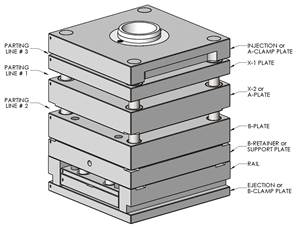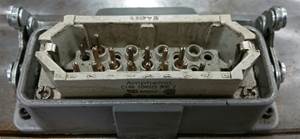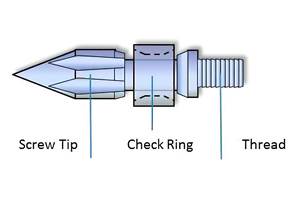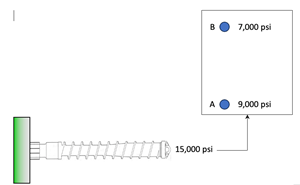Convergence of Design and Manufacturing
Clear lines between makers and designers have increasingly been blurred, with manufacturers often taking on tasks formerly in the realm of a design house, and designers asked to think about manufacturability in their napkin sketches.
AutoDesk, whose software already bridges the gap between design and manufacturing—its flagship AutoCAD program flanked by products like Moldflow and PowerMill—closed the gap at its own annual Moldflow Summit (June 11-13; Troy, Mich.) including a separate session on its CAM program for the first time. This is a change the company said attendees can expect at these events going forward, which Autodesk said would ultimately have more of a focus on manufacturing overall. Eventually events like this will be rebranded as Autodesk Manufacturing Summit’s, with multiple events collocated at the same location.
Speaking at the Summit, Vikram Vedantham, senior manager design and manufacture, AutoDesk talked about the disruption happening all around, centered on the convergence of design and manufacturing. With this connection, Vedantham said eventually manufacturing could actually lead design process instead of the inverse.
Generative Design
Part of this change comes from the concept of Generative Design. Still in its early days, and applied mostly at this point by additive manufacturing and some machining operations, generative design is the algorithmic exploration of design, according to Vedantham. His nutshell version: intelligent automation, where the technology is not trying to solve design problems but describe the scope of the design program and “bias the creation of solutions that gives you the optimal answer.”
AutoDesk’s Nick Markovic used a shipping analogy to describe the concept. Traditional design could be solving how to get product from the East Coast to the West Coast, but only thinking in terms of ocean transit. No optimization would lead a ship around the tip of South America, while “optimized” shipping would navigate through the Panama Canal. Generative Design would consider all modes of shipping—ocean, air, rail, road—and various factors/costs for each, simultaneously, giving users the most efficient delivery method. In manufacturing, this means generative design considers multiple facets (process, material, design constraints) simultaneously and derives the best choice.
AutoDesk’s Rahul Patil discussed what a convergence of design and manufacturing work flows would look like. In a traditional product development process, the phases—conceptualization, engineering tooling, and production—are siloed and sequential, going from one stage to the next without skipping. With the new industrial revolution, more data will be assigned simultaneously among different areas leading to more connectivity and collaboration.
Patil foresees data centricity—putting data at the center—and a situation where every person involved in a process has access to the data and can perform tasks with it, giving feedback to group—from OEM to moldmaker to molder. Any time data changes, the whole group is updated.
“This convergence is at the heart of our strategy,” Patil said, “and Moldfow is staged to play a crucial role in that.”
Cloud computing power will help make that collaboration, sharing and access possible, so that more users can participate in the process and provide feedback. In the future, the goal is to bring Moldfow into workflows of all the companies involved in a project so different user types like designers and engineers can simultaneously use and benefit from it.
In this case, designers could see during CAD whether a part is manufacturable, or whether a design choice could have an aesthetic impact., like a sink mark or weld line. “If you can show a designer there will be a visible defect on their design,” Patil said, “it gives them feedback early on.”
Related Content
How to Design Three-Plate Molds, Part 1
There are many things to consider, and paying attention to the details can help avoid machine downtime and higher maintenance costs, and keep the customer happy.
Read MoreHot Runners: How to Maintain Heaters, Thermocouples, and Controls
I conclude this three-part examination of real-world problems and solutions involving hot runners by focusing on heaters, thermocouples, and controls. Part 3 of 3.
Read MoreGot Streaks or Black Specs? Here’s How to Find and Fix Them
Determining the source of streaking or contamination in your molded parts is a critical step in perfecting your purging procedures ultimately saving you time and money.
Read MoreUnderstanding the Effect of Pressure Losses on Injection Molded Parts
The compressibility of plastics as a class of materials means the pressure punched into the machine control and the pressure the melt experiences at the end of fill within the mold will be very different. What does this difference mean for process consistency and part quality?
Read MoreRead Next
See Recyclers Close the Loop on Trade Show Production Scrap at NPE2024
A collaboration between show organizer PLASTICS, recycler CPR and size reduction experts WEIMA and Conair recovered and recycled all production scrap at NPE2024.
Read MoreLead the Conversation, Change the Conversation
Coverage of single-use plastics can be both misleading and demoralizing. Here are 10 tips for changing the perception of the plastics industry at your company and in your community.
Read More













